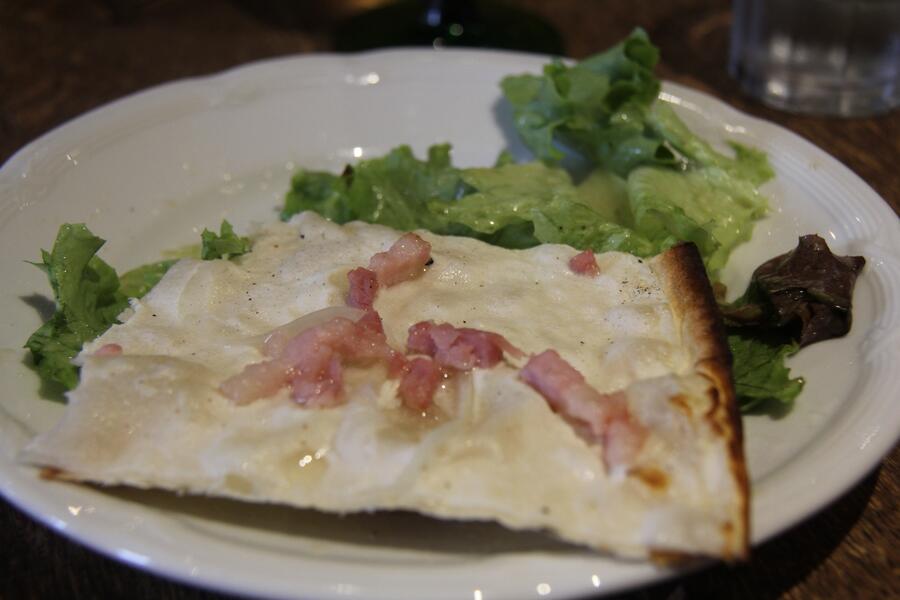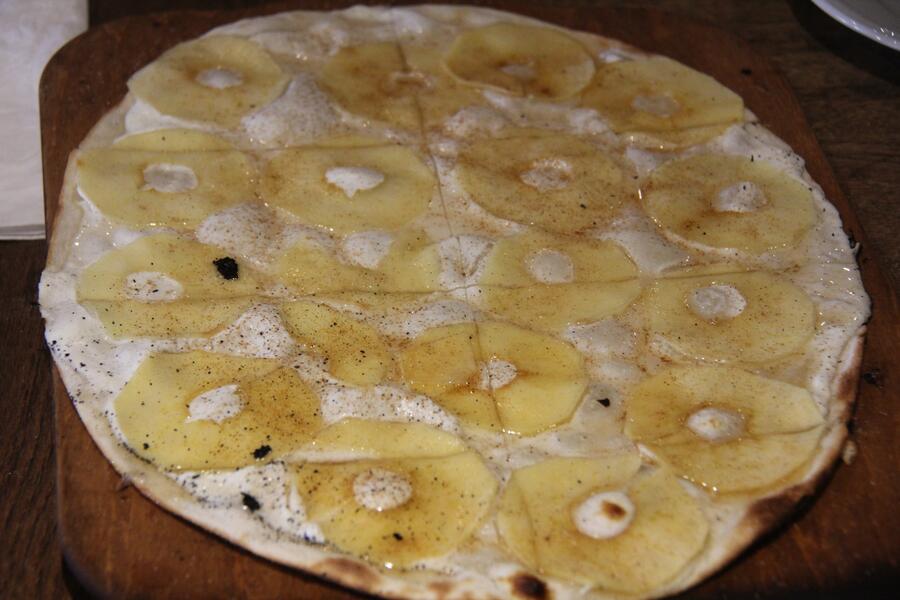A tour starts with gingerbread
In Strasbourg, an enticing melange of spices wafted through the tiny pain d'epices (spice bread, or gingerbread) shop, where Mme. Oster asked each of us what ingredients we could identify.
"Cinnamon?" one woman said.
"Yes," affirmed the baker. "What else?"
"Cloves?" offered another woman.
"That's right."
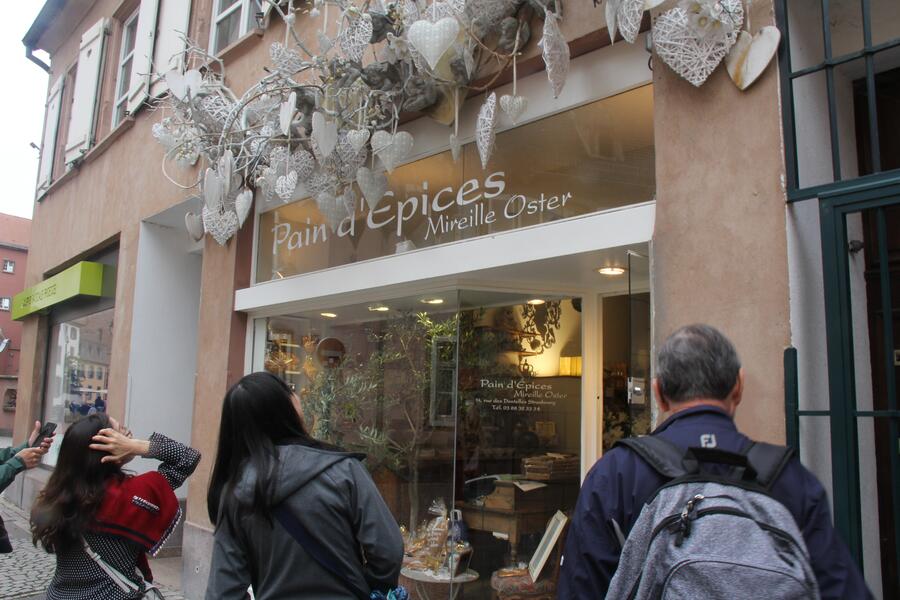
Others guess ginger (of course), nutmeg, orange zest, and mace. I always think of mace as a weapon, not as something consumable and definitely in treats as tasty as this. In Strasbourg, the sixth stop of my Viking Rhine Getaway cruise, I took another optional food-oriented shore excursion, called the Taste of Alsace. But this one was a substantial step above the beer and German food tour in Cologne.
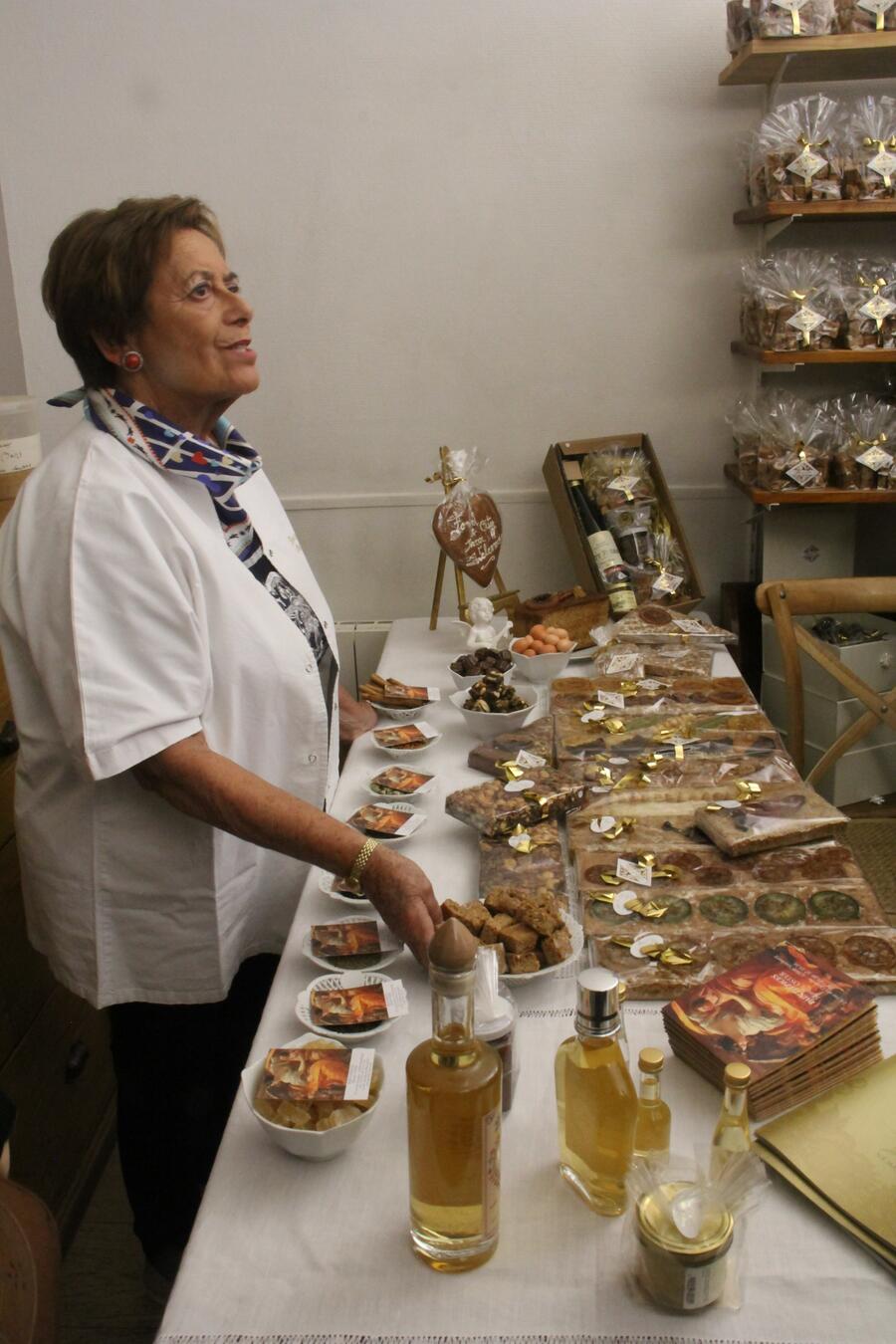
Scheduling our first tour stop at Mireille Oster's gingerbread bakery turned out to be a wise move. It allowed us to warm up our palates for everything else to come in Strasbourg.
A mix of two cultures
Our tour guide Aimee first took us through the flower-adorned Petite France district. Like many locals, she considered herself both French and German, even though the city clearly lies within French borders. Most of its citizens speak both languages, and even many of the nearby towns have decidedly German names. With its strategic location in the Alsace region, Strasbourg has changed hands many times since its inception in the fifth century.
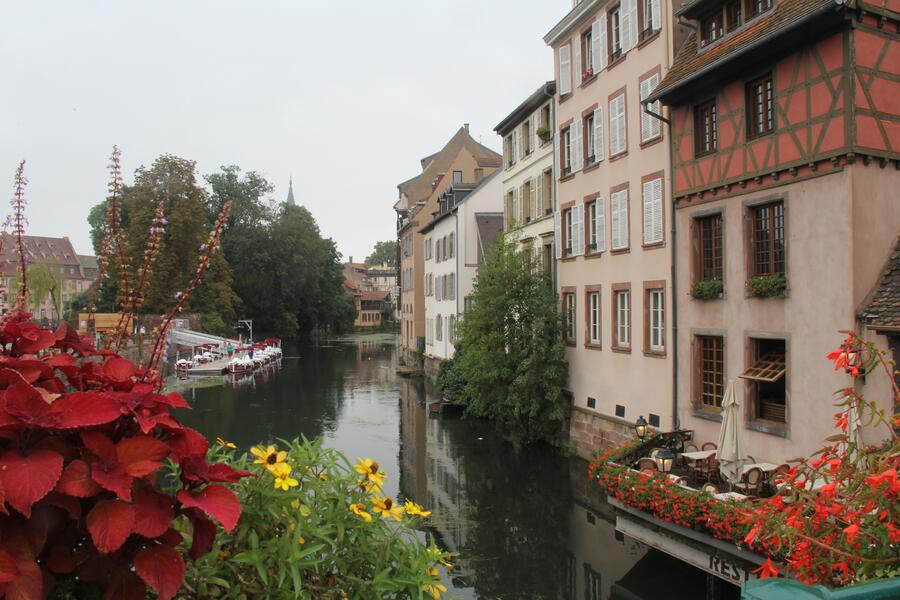
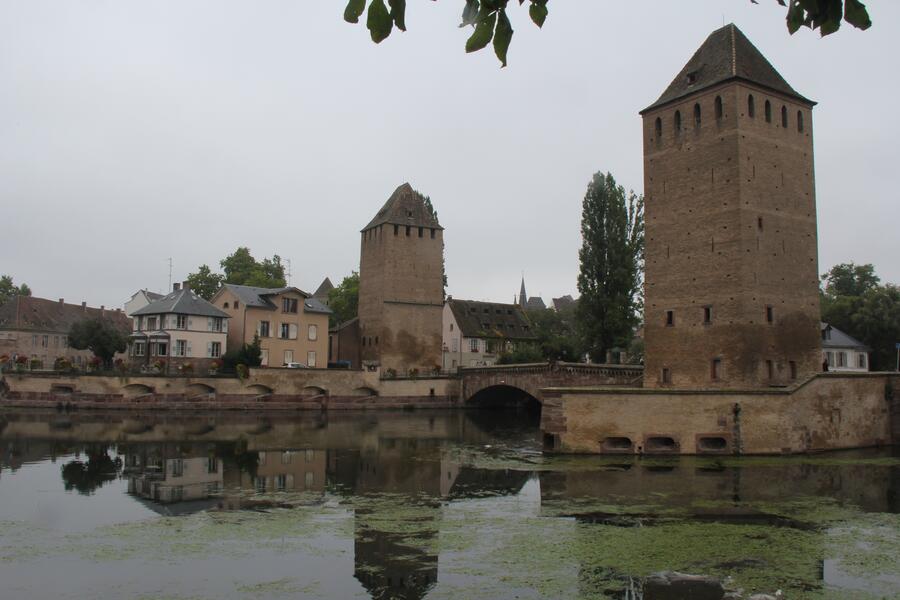
The canal-bordered Petite France neighborhood, with its colorful row houses and wrought-iron terraces, once represented the slum part of town. French nationals lived here and worked as tanners, throwing the animal waste into the canals and creating a toxic hazard ripe for disease. Not surprisingly, Amy said that it's now one of the most expensive places to live in the city.
Exploring the maze of cobblestone streets made us slightly hungry, so we stopped at Pain d'Epices. I bought a couple of bags of the original recipe gingerbread, even though I could have purchased one of several dozen enticing varieties. Amy then led us to another small bakery for kougelhopf, a puffy yeast bread that's either sweet or savory. While I liked it, it would have even better with some kind of spread or topping like butter and jam.
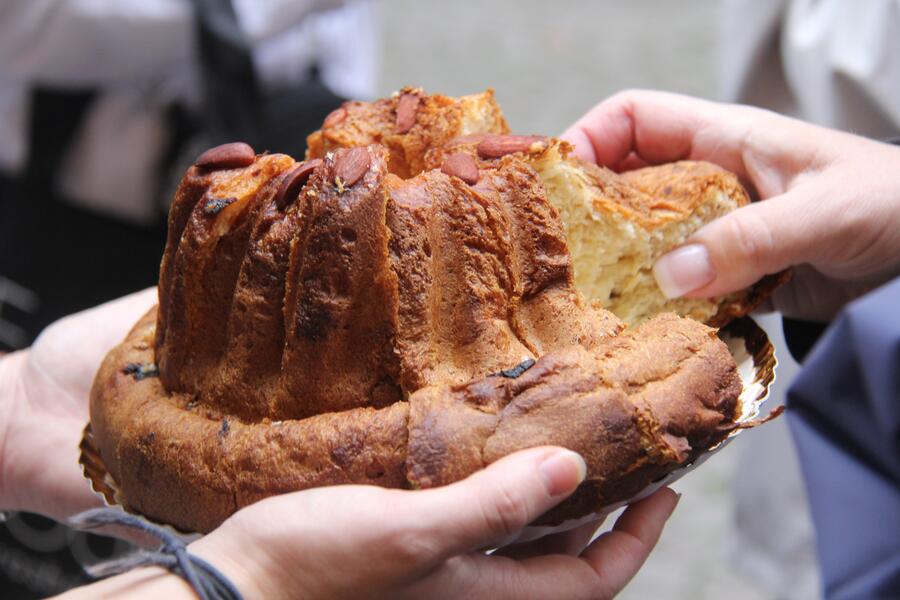
We then strolled past the Cathedral Notre Dame de Strasbourg on our way to lunch. Even though I wasn't super-hungry because of the previous snacking, I looked forward to what came next - tarte flambee.
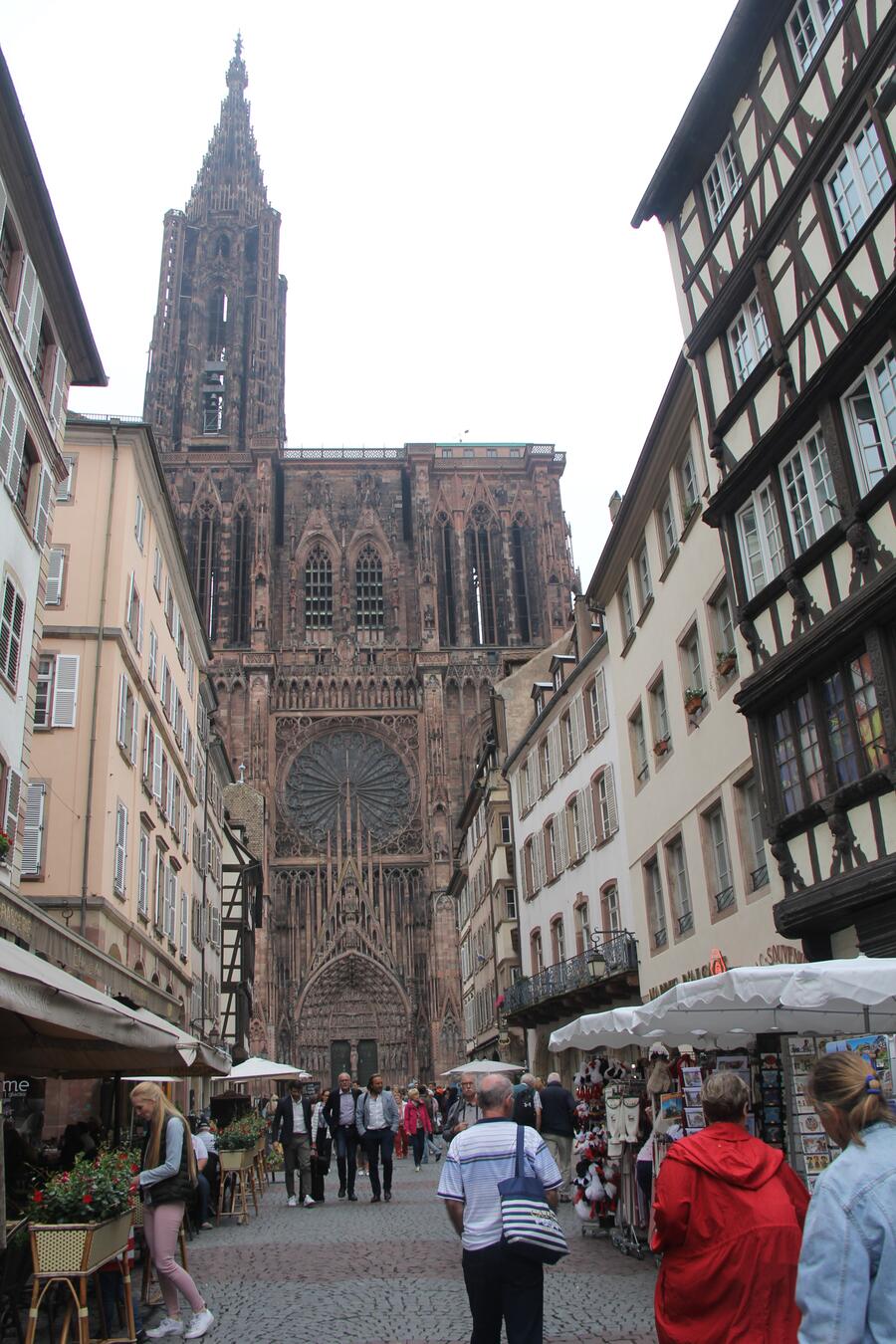
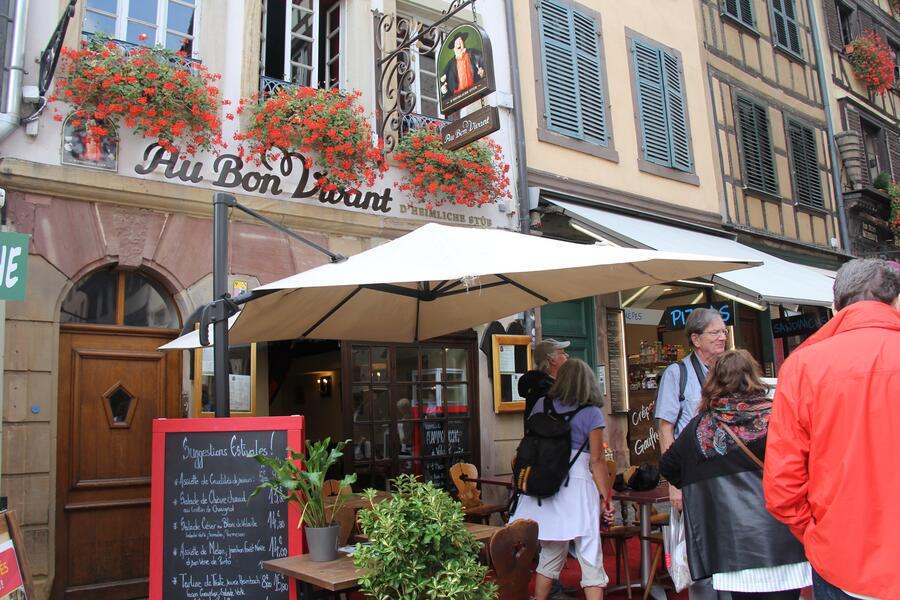
The local take on an Italian standby
If you love flatbread pizza, then this local dish is its great ancestor. Simply made with leavened dough, sour cream, onions and bacon, it's an uncomplicated delight that's improved with a little bit of melting cheese. At Au Bon Vivant, we enjoyed several servings of the basic tarte, with some salad, wine and beer. We even had a cooking demonstration where a woman from our group assisted the chef in making her own. For dessert, the chef brought out another version with sour cream and spiced apples.
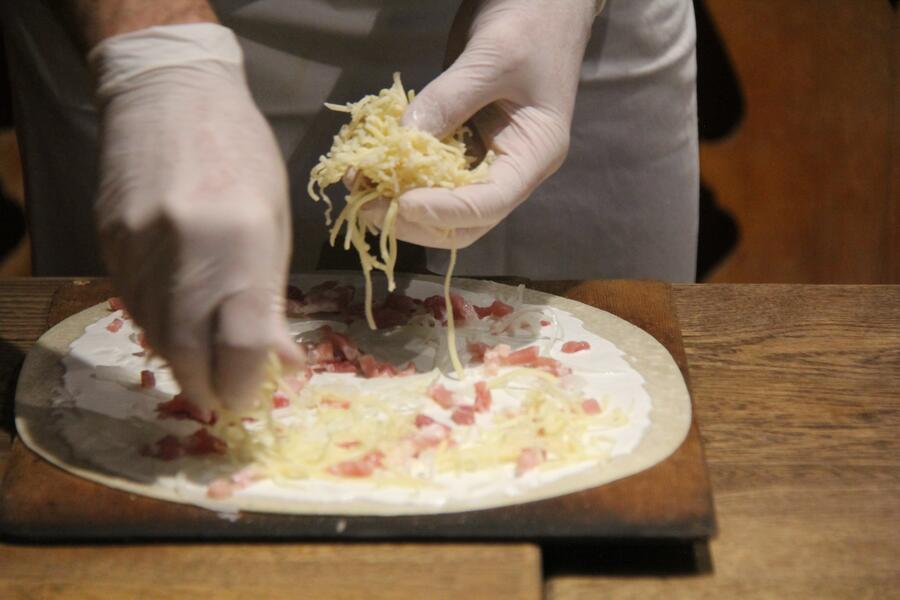
By this time, I was completely stuffed with all of this food, but I knew there would be much more to come. Honestly, all of this was just a warm-up. My appetite needed to fully recover for that massive next round, which I'll talk about in the next post.
